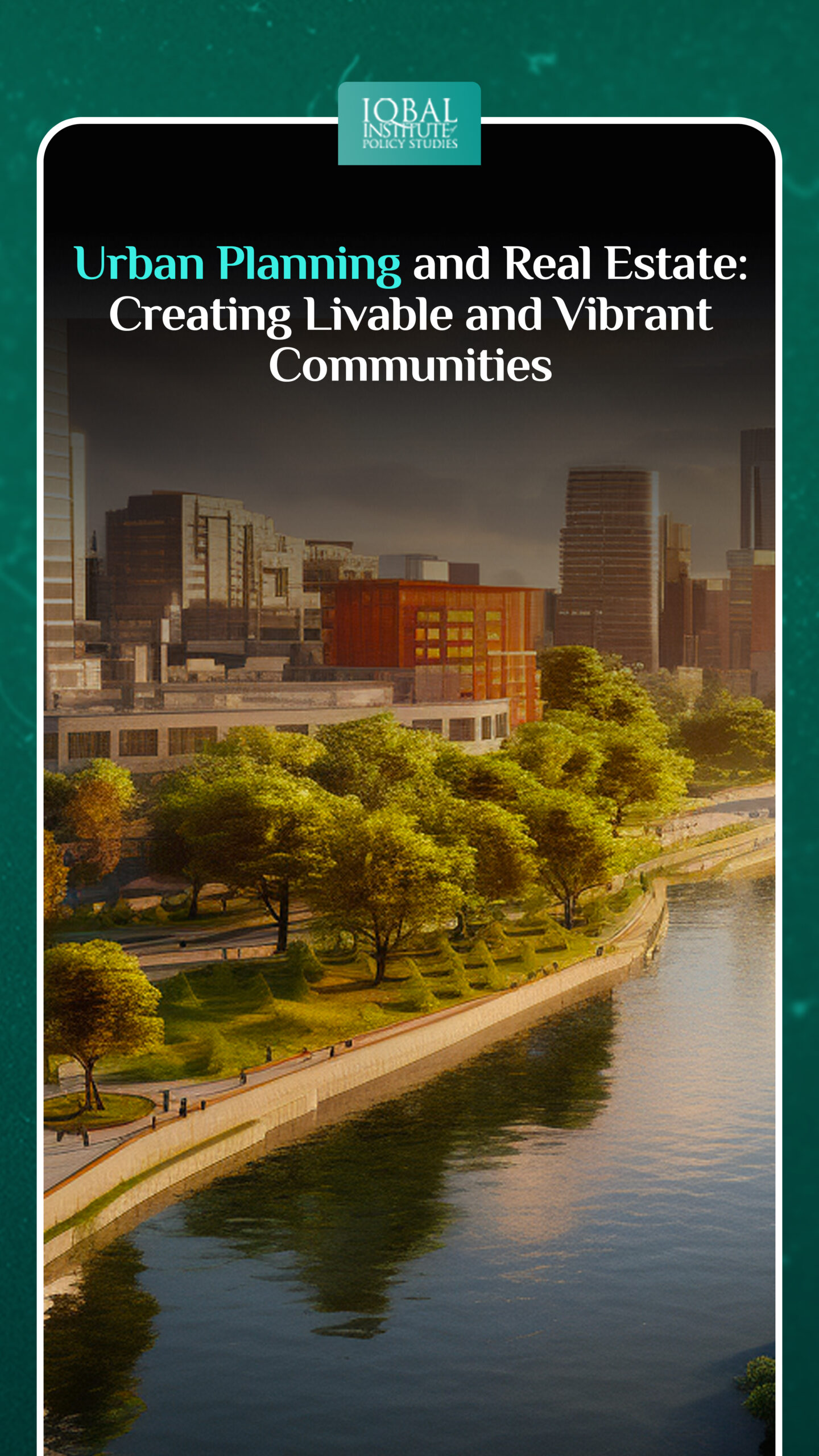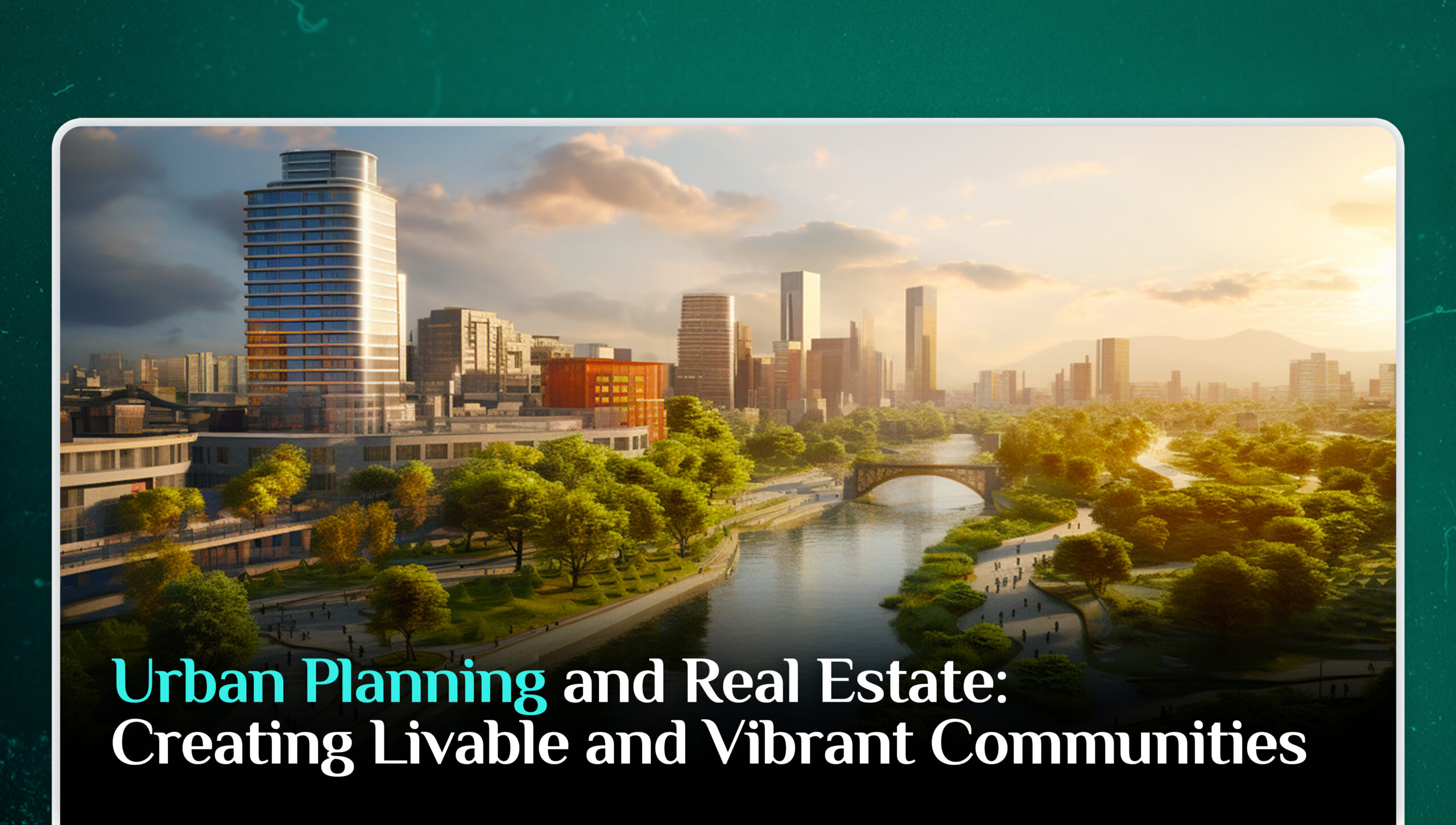Urban planning and real estate are two interwoven sectors that have a significant impact on the sustainability of the city and the development of the nation. Urban planning includes planning and executing methods that shape the layout, infrastructure, and amenities of cities and towns. Real estate, on the other hand, includes property development, sale, and management. Urban planning and real estate work in tandem to create livable and flourishing communities. Real estate deals with the value of land, whereas urban planning governs its usage. The land would not be divided proportionately between competing uses by the market system and would not fulfil its demand and supply in the absence of urban planning. Moreover, any urban planning or real estate development proposals or decisions can have a significant and modest impact on property prices, both positively and negatively. The requirements of society and the characteristics of the city accommodated by urban infrastructure influence the growth of the city’s real estate market. Thus, proper urban planning and efforts are required for the development of better cities and the strengthening of the real estate industry.
Urban Planning and Real Estate in Pakistan
Pakistan’s urbanisation rate is increasing, with 37.44% of the people living in major cities (Trading Economics, 2021). 40% of Pakistan’s urban population lives in slums due to a lack of means to afford housing (Anwar, Hasan, & Saqib, 2021). Congestion, pollution, housing shortages, mobility, and other utility issues are all on the rise as a result. Cities are running out of open public areas, offices, and commercial space, as well as viable urban transportation networks. Although Pakistan boasts some of the world’s largest cities, they are not all-inclusive. People living in slums and ghettos are continuously threatened with eviction. Our country’s urban planning could not keep up with the changing dynamics of rapid urbanisation. The urban housing demand in Pakistan is 350,000 units per year out of which 150,000 units are supplied by the state (Hassan & Arif, 2018). However, the unmet demand results in the expansion of slums on squatter settlements and agricultural land on the boundaries of cities.
Furthermore, the country’s illegal housing plans and horizontal development are profit-driven rather than need-based. Some of these developments are built on floodplains or agricultural regions that are destroyed by natural calamities such as floods, earthquakes, or landslides. The extension of horizontal projects results in fewer homes leading to less space. This results in cities expanding and overlapping the boundaries of adjacent cities. There is no focus on the establishment of new cities or towns to handle the vast population nor on effective urban planning and policy implementation. Also, many real estate enterprises are being impacted as inflation becomes clear on the horizon. Many goods, services, construction materials, and labour expenses are rising, resulting in higher-priced rental homes and properties. Investors are having difficulty investing in the real estate sector, which is affecting its growth. For example, the average price of a property in Lahore in 2020 was US $73 per square foot, up 6.25% from 2019 (Mehmood, 2020).
Climate change is another issue that often leads to urban floods, rising temperatures, and the spread of diseases. For instance, the 2022 monsoon floods have displaced 33 million people and killed more than 1000 people in the country (skynews, 2022). Currently, there are 18 to 20 green buildings in Pakistan that are LEED approved and registered with the US Green Building Council (Landscape , 2021), however, there is no focus on sustainability or green practices on a large scale in both real estate and urban sectors.
How to Create Livable Communities through Urban Planning and Real Estate?
Urban planning and real estate must work together harmoniously to develop livable and vibrant communities which can be achieved in the following ways:
Adopting Mixed-use Developments
One of the most effective methods for building livable communities is to integrate many functions into a single development. Mixed-use developments foster convenience, shorten commutes, and encourages a feeling of community by blending living, working, and recreational places. Also having access to resources nearby for residents promotes a more sustainable and socially integrated environment.
Designing for Pedestrians
Creating livable communities requires designing neighbourhoods and metropolitan areas with pedestrians in mind. Walking and cycling are encouraged via well-connected sidewalks, bike lanes, and public areas, which encourages physical exercise, lessens traffic congestion, and improves air quality. Putting pedestrian safety first by implementing traffic-calming measures and designing appealing streetscapes improves both residents’ and tourists’ experiences in general.
Inclusion of Green Spaces and Parks
Including green spaces and parks in urban settings has various livability benefits. These spaces allow for recreation, relaxation, and connection with nature. Green space boosts mental health, encourages physical exercise, and improves air quality. Parks, community gardens, and urban woods should be prioritised by urban planners and real estate developers, and they should be freely accessible to all people.
Incorporating Sustainable and Green Practises
Sustainable construction practices are critical in the development of livable communities. Real estate developers should use energy-efficient design ideas, green construction materials, and renewable energy sources in their projects. Sustainable infrastructure, such as rainwater harvesting systems, solar panels, and efficient waste management systems, lessens the environmental impact of urban expansion.
Initiatives for Affordable Housing
Addressing the need for affordable housing is critical for developing inclusive and livable communities. Real estate developers and urban planners should work together to incorporate affordable housing programmes into their projects. This guarantees that people from all socioeconomic backgrounds have access to safe, quality, and affordable housing, encouraging social equity and supporting community socioeconomic diversity.
Community Engagement and Participatory Planning
In order to create livable communities, inclusive community engagement, and participatory planning processes are required. Involving people, companies, and community organizations in decision-making processes enables the incorporation of varied perspectives, local knowledge, and community ambitions into urban planning and real estate development. This develops a sense of ownership, strengthens social cohesion, and ensures that the community’s needs and wants are reflected in the final results.
Conclusion
Urban planning and real estate development can work collaboratively to create livable and vibrant communities. Urban planners and real estate developers can work together to create cities that prioritise citizens’ well-being and satisfaction. It is critical for stakeholders, such as urban planners, developers, legislators, and communities, to work together successfully to conceive and create sustainable and people-centred urban places. We can build communities that are not only functional and aesthetically beautiful, but also foster social connection, environmental sustainability, and a higher quality of life.
This article is written by Haneen Gul. Haneen is a Research Analyst at the Iqbal Institute of Policy Studies (IIPS).
References
Ahmed, A. (2022, September 11). DAWN. Retrieved from https://www.dawn.com/news/1709474/over-38pc-urban-pakistanis-live-in-unaffordable-housing
Anwar, A., Hasan, L., & Saqib, A. (2021). PIDE. Retrieved from pide.org.pk: https://pide.org.pk/research/cities-of-the-future/#Content-e323acc63196e6a8e38e
Hassan, A., & Arif, H. (2018, August 19). DAWN. Retrieved from https://www.dawn.com/news/1427893
Landscape . (2021). Retrieved from https://landscape.com.pk/green-building-standards-in-pakistan/
Mehmood, T. (2020). Globe Estate Builders. Retrieved from https://globeestatebuilders.com/effect-of-inflation-on-property-in-pakistan/#:~:text=an%20unmanageable%20mortgage.-,The%20latest%20trend%20of%20House%20Prices%20due%20to%20inflation,2.89%25%20when%20adjusted%20for%20inflation.
Meyer, M., Qazi, M., Rajashekar, A., & Zhang, Y. (2022, September 8). BEHIND ON RENT OR LEFT BEHIND: MEASURING HOUSING POVERTY IN URBAN PAKISTAN. World Bank Document. Retrieved from https://openknowledge.worldbank.org/handle/10986/37989
skynews. (2022, august 29). Retrieved from news.sky.com: https://news.sky.com/story/why-pakistan-is-at-ground-zero-of-the-climate-crisis-after-suffering-deadly-flooding-12684458
The World Bank. (2022). Retrieved from https://www.worldbank.org/en/country/pakistan/overview
Trading Economics. (2021). Retrieved from tradingeconomics.com: https://tradingeconomics.com/pakistan/urban-population-percent-of-total-wb-data.html



Leave a Reply